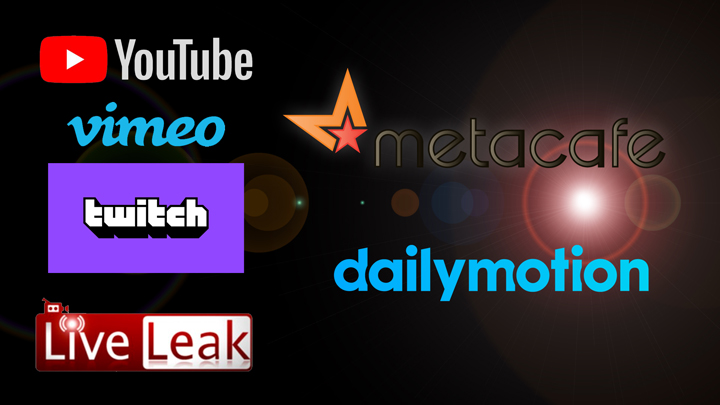
Posted on
The Vlogger Set up
In our world of online celebrity and specialist video content providers: there has been more and more attraction towards a personal video camera set-up at home (or work); be that for youtube or twitch and other likened sites. We often get people asking us about what they need to set up and usually after a 5 minute conversation nearly everyone we have spoken to requires the same basics. I use the word basics as you can go as deep into online streaming or video creation as you want to go.
There is plenty of free video editors out there be them packaged already with laptop/computer purchases, but a good one to get you going if you don’t have one is the Open-Shot Video Editor. It is simple, easy to use, and has a plenty of tutorials for it online. Yes it is very limited but at least you are getting your content out.
So to begin with you have to ask yourself are you streaming or are you producing content to be edited together?
For streaming it is always best to get an actual video camera. Yes there are plenty of so called web cams out there but the options that come with those cameras are somewhat limited. If you purchase an actual video camera such as the Sony HDR-CX900 or the Sony FDR-AX53 you will get clearer streaming video, and the ability to adjust zoom to a greater extent than PC video cams or a laptop cam can.
Remember, clarity will keep your audience attentive. There is nothing worse than pixelated streamed video. Simply put pixel artifacts are annoying. So stay with a dedicated video camera to get the best pleasing results.
When it comes to content for youtube or other online sharing platforms then usually most people are editing many small series of video footage (usually between 5-30 seconds) and splicing them together on an editing platform. So for this way of doing things the camera options are a lot more. The basic fact is that any camera that can do full HD video will do.
But saying that: for better more practical results it is better to have a modular system. Be that from Nikon, Canon, Sony, Panasonic or even Olympus. The mirrorless systems are always going to be a better choice for video, as mirrorless cameras do not get as hot as their DSLR brethren when doing video(mostly). This usually means: less heat equals less visual noise so better quality video.
Our recommended camera set ups are often within the budget of the creator. But to begin with you don’t need to spend more than a $1000 on the whole setup.
So in this sense the Sony A6000, or the Panasonic G7 are more than enough to begin with. It is all about the lens you use and the lights that you have. For the lens, if you have a stationary set-up then its best to go with a focal length of anywhere between 50mm-85mm anything between those lengths are fine as there is very little to no distortion if a person comes close to the lens. Prime lenses which are lenses that use a single focal length are always better quality, with a narrower depth of field, and give a better representation of the scene. You could use packaged kit lenses if you wish to keep it on a low low budget but it is recommended to have at least one prime lens.
Lighting also plays an important part based on how you wish to best represent you and your scene. Near field lighting panels such as the Vid-pro LCD lighting panels (Z-96 and LED300) are more than enough light for most Casters and Presenters. They are near field though, so if you need something a little more light-flooding as such do look at the larger studio panels again from vid-pro such as the LED604 or LED1X1 panels.
For the microphone never use the on-board mics on any camera. They are the worst mics ever. They have very small frequency ranges and pick up everything in the near space around and on the camera; they also tend to have a high noise floor which means a lot of HISS noise (white noise) to get rid of in post production. A dedicated Mic is always going to be better quality and much more a clear audio support for your video. (you can have the best video in the world but if the audio is bad then the viewer wont stay with you). Again just like the camera you do not need to spend a great deal on a good mic. A few options are Zoom H1, Zoom H2N or any RØDE camera mic will be adequate. You really do not need more than that to begin with. A TIP:- Always treat your audio independently rather than use video software to do it. A dedicated Audio editor is going to give you better results, such as the free to download Audacity which has everything you need to adjust your audio to however you want.
There after everything else needed for your set up is completely subjective but you could add backdrops, reflectors, different lenses, twin mics for more dynamic range and stereo masking, multiple cameras for one shot multi views and much much more.
This blog has been about a simple, straight forward, no more than a $1000 to spend set-up for anyone wanting to either create, or stream their content to the world.
We hope this concise blog piece has helped you and if you need more information and have questions please visit us at any of our locations for Vlogger / Tuber creator tips and gear.
Stuart Perry
1402 11th ave SW Calgary

